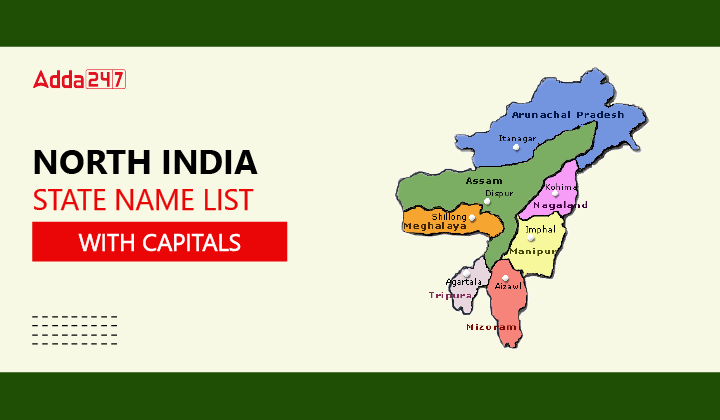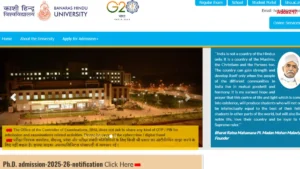Table of Contents
The areas in the northern part of India consist of many states and union territories and combinedly they are referred to as North India States. S India is a large country, hence it has been divided into several divisions for administrative purposes as well as for geographical and cultural study. Different official sources define and categorize the North India states differently.
The administrative center of India is located in the affluent and historically significant region of North India. Based on various accurate official sources, we have published the North India State Name List with Capitals in this article.
North India States – A Brief Overview
The North India States are the names given to the regions in the northern half of the nation. North India states are defined differently by various authorities, including the press and the Indian government. Some of the definitions are as follows:
- According to the Ministry of Home Affairs, the northern region includes the union territories of Delhi, Chandigarh, Ladakh, and Jammu & Kashmir as well as the states of Punjab, Rajasthan, Haryana, and Himachal Pradesh.
- In the list of north India states, the Ministry of Culture excludes Delhi off but includes Uttarakhand.
- Rajasthan and Chandigarh are not included in the Geographical Survey of India’s list of the northern India states, while both Delhi and Uttarakhand are.
North India States – Landscape & Terrain
The landlocked North India States are encircled by some of the most remarkable geological features. There is so much to see in the northern region of India, from mountains to deserts. Here are a few intricacies of the landscape and terrain of India’s northern states.
- The mighty Himalayas in the north and the Indo-Gangetic plains in the south and east roughly guard the north India states.
- The Thar, a famous Indian desert, is the primary geological feature to the west of India’s northern states.
- The Himalayas serve as a physical barrier separating India from the Tibetan Plateau and the Central Asian Karakoram Mountains.
North India State Name List with Capitals
Since different government entities have different names for the North India States, the majority of administrative work is done in accordance with the guidelines established by the Ministry of Home Affairs (MHA). According to the MHA, the northern India states name list with capitals have been enumerated below.
| North India State Name List with Capitals | |||
| S. No. | North India State | Capital | State/UT |
| 1 | Haryana | Chandigarh | State |
| 2 | Himachal Pradesh | Shimla | State |
| 3 | Punjab | Chandigarh | State |
| 4 | Rajasthan | Jaipur | State |
| 5 | Chandigarh | N/A | UT |
| 6 | Delhi | N/A | UT |
| 7 | Jammu and Kashmir | Srinagar/Jammu | UT |
| 8 | Ladakh | Leh | UT |
| 9 | Uttar Pradesh | Lucknow | State |
| 10 | Uttarakhand | Dehradun | State |
North India State Name List – Languages Spoken
Even today, there are countless languages spoken in India. The states of northern India are not very different from one another with regard to culture. The majority of North Indian states have their unique regional languages. Here is a list of some of the vernacular languages that are extensively spoken in India’s northern part.
| North India State Name Lists – Language Spoken | |
| States | Language Spoken |
| Uttar Pradesh | Hindi, Urdu |
| Delhi | Hindi, English, Urdu, Punjabi |
| Ladakh | Ladakhi |
| Haryana | Hindi, Punjabi, English |
| Rajasthan | Hindi, Sindhi, Gujarati, Punjabi |
| Chandigarh | Punjabi, English |
| Himachal Pradesh | Hindi, Pahari |
| Jammu and Kashmir | Kashmiri, Urdu, Dogri, English, Hindi |
| Uttarakhand | Pahari, Punjabi, Nepali, Hindi |
| Punjab | Punjabi, Hindi, English, Urdu |
Capital City of India
Delhi is one of the most significant parts of Northern India. It is also the capital city of India. Here’s how Delhi has proven to be an integral part of North India.
- Delhi, a union territory that includes New Delhi, the Indian capital, is referred to as the National Capital Territory of Delhi.
- Delhi has a rich historical legacy that dates back to ancient times. The city has seen the rise and fall of several empires and dynasties, each leaving their imprint on its cultural and architectural heritage.
- The city gained prominence during the reign of the Tomara dynasty in the 8th century, when it served as their capital.
- Delhi witnessed the rise of the Delhi Sultanate in the 12th century when it became the capital under the rule of Prithviraj Chauhan and later the Slave Dynasty, the Khiljis, the Tughlaqs, and the Lodis.
- Delhi is one of the nation’s principal business, administrative, governmental, and tourist centers in addition to being the most significant state in north India.
- The National Capital Region of the nation includes Noida, Gurgaon, Faridabad, and Ghaziabad in addition to the city itself.
- There are as many as 111 organizations that have ranked among the Fortune 500 with offices in Delhi NCR.
- The fact that the President and Prime Minister of India’s official houses are located in this city in northern India is one of its most outstanding features.



 UNIRAJ Admit Card 2025 Out, Download Lin...
UNIRAJ Admit Card 2025 Out, Download Lin...
 BHU PhD Admission 2025-26, Apply Link, S...
BHU PhD Admission 2025-26, Apply Link, S...
 MPESB Exam Calendar 2026 Out, Check Exam...
MPESB Exam Calendar 2026 Out, Check Exam...












